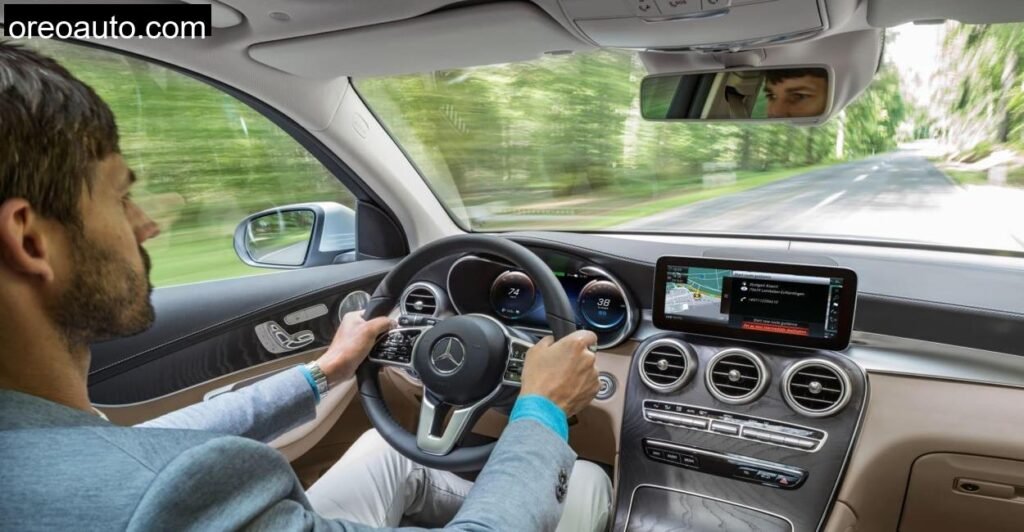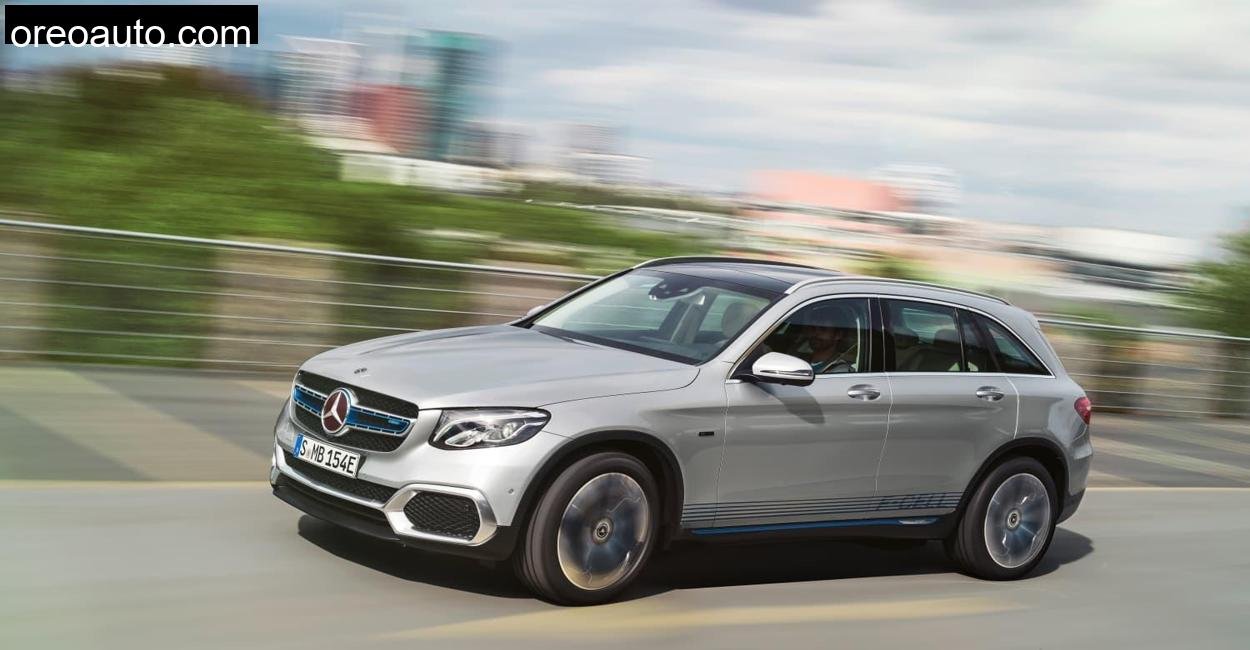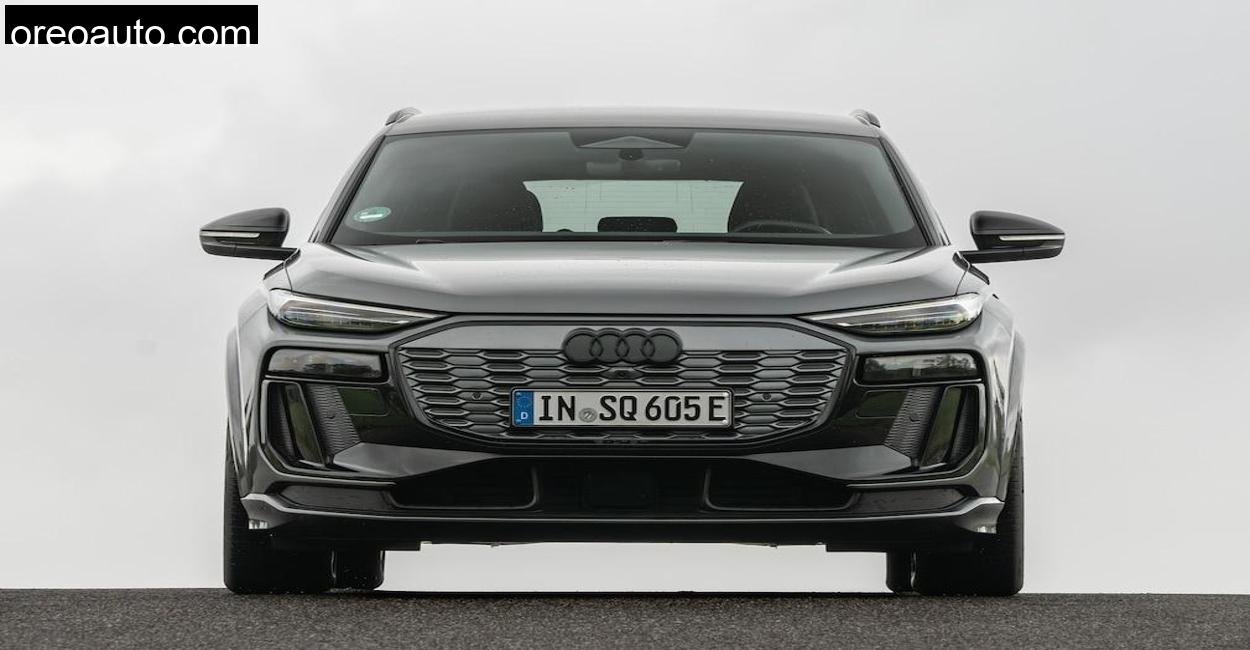I remember rolling out of the narrow village lane in Harplage that morning, dew still glistening on the wheat fields, fog rising slowly through the trees lining the old Harz foothills. The silence was uncanny, not the peaceful kind you’d expect from a countryside dawn, but a mechanical silence, deeper, stranger. I was behind the wheel of something that once felt like the future: the Mercedes GLC F, Cell, humming almost imperceptibly, a ghost on four wheels powered by hydrogen.
No exhaust noise, no vibration, just a distant whirr like an electric shaver somewhere under the bonnet. The landscape passed by quietly as I navigated toward the ridge above Harplage. And that’s where the strange charm of the GLC F, Cell began to truly unfold.
A Hydrogen Plug, In Like No Other

Mercedes didn’t just slap a fuel cell into an existing chassis. This wasn’t a lazy conversion job. The GLC F, Cell was purpose, built around the hydrogen system, yet it kept the familiar GLC silhouette. On the outside, it looked like just another GLC from 2019, silver, smart, and upright. But beneath that conservative skin lived something radical: a hydrogen, powered plug, in hybrid.
Yes, hybrid. Not in the way we usually mean with petrol and electric, but hydrogen and electric. It was, at the time, the only vehicle on the market to combine these two energy paths. Under the hood sat a fuel cell stack that resembled a V8 block more than a laboratory component, while the electric motor and battery sat in the rear, tightly packaged. The dual hydrogen tanks were mounted under the floor, balancing out the weight, which still tipped the scales at over two tonnes.
In motion, it didn’t feel heavy. It didn’t feel like much of anything at all, to be honest, just quiet, composed forward motion. The torque from the electric motor (365 Nm right from the first rotation) was always there when I needed it, whether merging from a village onto the B243 or gently ascending the winding, forested trails above the limestone hills. It didn’t surge or snap like some battery EVs I’ve driven. Instead, it was like being pushed along gently by a steady breeze.
Driving Modes: Silent Complexity
The GLC F, Cell had four driving modes, and I switched between them over the course of the day like a child playing with buttons on a spaceship. In Hybrid mode, both the hydrogen and the battery worked together, perfect for open roads around Harplage where gradients vary and traffic is rare.
F, Cell mode was pure hydrogen. This is where the car felt most special. Long, sustained efficiency. The fuel cell held steady, no surges, just that consistent hum from the intake system. A touch surreal when there’s no gearbox to worry about, no engine noise, just a consistent forward press.
Battery mode was limited. It gave me about 40 kilometers of range when fully charged, and it made most sense when coasting back through the sleepy village roads or stopping for coffee in Bockenem. Finally, Charge mode let the hydrogen system recharge the battery, useful, but inefficient, and not my preferred choice given the high hydrogen consumption.
But no matter the mode, one thing remained constant: the refinement. Everything mechanical had been muffled to the point where even gravel popping under the tires sounded louder than the propulsion system. In town, it was sublime. On the narrow country roads of Lower Saxony, it felt like I was driving the future through the past.
Range Anxiety with a Twist
Where the GLC F, Cell began to show its cracks was in range. The theoretical range with hydrogen alone hovered around 430 kilometers, but in reality, on a brisk drive through Harplage’s undulating terrain, using Hybrid mode liberally, I was seeing around 290 to 310 kilometers before the system began nudging me to top up. The additional electric range from the battery added about 35 to 45 kilometers, but charging the battery took around 2.5 hours from a home wallbox.
Hydrogen refueling, when available, was a dream. Fast, clean, under five minutes. But the keyword is “when available.” Even in Germany, one of the best countries for H₂ infrastructure, I had to plan my test loop around the next station near Hildesheim, a 45, minute drive out of Harplage.
This was the paradox. The car itself was capable, smart, incredibly refined, but the infrastructure was its Achilles’ heel. That very morning I passed a farmer loading hay into an old Opel Frontera and couldn’t help thinking: his crude diesel tank would be easier to refill in a pinch than my space, age hydrogen cell.
Interior and Utility: Familiar Mercedes, Limited by Tech

Inside, it was business as usual for Mercedes. The cockpit was a direct lift from the GLC of the time, clean layout, analog gauges flanked by a digital screen, everything within easy reach. No hydrogen futurism here. The drive selector, infotainment, even the climate controls felt standard. That’s good in a way, it meant the learning curve was shallow.
But the tech underneath meant compromises. The boot space, usually around 550 liters in a normal GLC, was trimmed to about 300 liters because of the hydrogen tanks. With the seats folded, you could barely get to 1600 liters. For someone who regularly hauls a mountain bike, like I do, this was a real constraint. I had to remove both wheels and fiddle the frame diagonally into the space, and even then it didn’t quite lie flat.
The rear seats also sat slightly higher, another reminder of the hydrogen gear lurking underneath. It wasn’t uncomfortable, but it was noticeable on long drives, less headroom and a more upright seating position.
Real, World Performance and Consumption
Out on the B, roads and rolling forest curves of Harplage, I drove the GLC F, Cell like a normal SUV, moderate throttle, occasional overtakes, full regen on the downhill switchbacks. The performance was fine. Not thrilling, not dull. Just… seamless. Top speed was limited to 160 km/h, and acceleration felt like a warm, up jog rather than a sprint. Mercedes never published a 0, 100 time, but I estimate it’s in the 8.5 to 9, second range.
Hydrogen consumption was the real eye, opener. Roughly 1 kg per 100 kilometers, with about 4.4 kg stored onboard. In Hybrid mode, this dropped slightly to around 0.34 kg per 100 kilometers, but that also meant draining both battery and fuel cell together. With hydrogen costing upwards of 10, 12 €/kg, that made this SUV more expensive to run than a petrol V6.
The car scored three out of five stars in the ADAC EcoTest, the same as its diesel and fully electric cousins. Part of this was down to how hydrogen is produced, currently, mostly from natural gas. Until that changes, even a zero, tailpipe, emissions car like this isn’t carbon, neutral.
Technical Specifications
To stay accurate and dependable, we obtain our technical info directly from Mercedes official source.
| Specification | Detail |
| Drive Type | Fuel Cell (PEM) with electric motor (plug, in hybrid) |
| Power Output | 155 kW / 211 hp |
| Torque | 365 Nm |
| Battery Capacity (gross/net) | 13.5 / 9.3 kWh |
| Hydrogen Consumption | ~1.0 kg / 100 km (F, Cell), ~0.34 kg / 100 km (Hybrid) |
| Battery, Only Range | ~51 km |
| Hydrogen Range | ~430 km (real, world ~290, 310 km) |
| Total Range | ~325, 370 km combined |
| Top Speed | 160 km/h (limited) |
| Length / Width / Height | 4.67 m / 2.10 m / 1.65 m |
| Boot Capacity | 300 , 1600 liters |
| Curb Weight | 2130 kg |
| Monthly Lease Price (2019) | €799 (plus H₂ costs) |
Conclusion: The Quiet End of a Brilliant Failure
There’s a melancholic beauty in driving something that was supposed to be the future but never made it. The Mercedes GLC F, Cell was brilliantly engineered, polished, and ready. But the infrastructure, the economics, and perhaps Mercedes’ own reluctance sealed its fate. They pulled the plug in 2020 and redirected fuel cell tech to buses and trucks, vehicles where big tanks and depot refueling make sense.
As I parked the GLC F, Cell back under the chestnut tree in Harplage that evening, the silence returned. No engine ticking as it cooled. No smell. Just birdsong and wind. The car stood still, quietly monumental, like a retired astronaut in a town that never went to space.
Why was the GLC F, Cell discontinued?
Mercedes cited lack of infrastructure, high technology costs, and rapid advances in battery, electric vehicles as reasons for ending production. They now focus fuel cell efforts on commercial vehicles.
How does hydrogen refueling work in GLC F, Cell?
You refuel at a dedicated H₂ station using a special nozzle, similar to LPG. It takes 3, 5 minutes. Stations are rare outside cities in Germany.
Can I still lease or buy the GLC F, Cell?
No. The car was only ever available through a full, service lease to selected partners and politicians. Mercedes has since ceased all consumer, facing hydrogen programs for cars.










